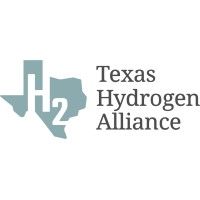A CarbonQuest CCS System Captures CO2 Emissions from New York City High Rise
)
A CCS system devised by CarbonQuest, an American start-up specializing in modular, point source carbon capture technology aimed at commercial and residential buildings, is being utilized to capture carbon dioxide from a 30-story apartment building in New York City, according to Canary Media.
The innovation can sequester 60% of the emissions from the gas boiler, which would’ve been inconvenient to replace with electric heat.
“The room-sized CO2 filtration and liquefaction system, installed early this year by CarbonQuest, is a rare instance of carbon capture that actually works and delivers an economic payback,” Canary Media writes, citing the US$268 per tonne that large buildings in New York will soon be paying for emissions that exceed a mandated cap.
CabonQuest “tapped into the insulated duct that carries hot boiler exhaust to the chimney, diverting the flow through a circuitous array of hissing, humming machinery that pulls out moisture and isolates the carbon dioxide from nitrogen and oxygen, which get released back the flue,” writes Canary Media Senior Reporter Julian Spector as he recounted the tour he was given of the installation at 1930 Broadway, across the street from the Lincoln Center, by two CarbonQuest executives.
“The carbon dioxide then gets cooled to a liquid state and stored, under pressure, in a metal tank. Eventually, a truck pulls up on the street outside, connects a hose to a nozzle on the side of the building, and sucks out the liquid carbon for delivery to a concrete factory, which will inject the greenhouse gas into concrete blocks, making them stronger.”
“We love that because that was something permanent: We took our exhaust and rendered it inert,” said Josh London, a senior vice president at Glenwood Management, a local real estate firm.
Although London had considered replacing the gas boiler, he concluded that an electric system wouldn’t offer the same efficiency and it would be a complex undertaking to remove the “giant cast-iron barrel that was installed during construction because it’s larger than any doorway in the building.”
In New York City, 70% of carbon emissions come from buildings. Local law 97 stipulates that buildings over 25,000 square feet reduce their exhaust 40% by 2030 and 80% by 2050.
“The biggest challenge for cities is in the built environment,” CarbonQuest President and CEO Shane Johnson told Spector. “This is not an easy problem. But it’s also the one that can make the most impact.”



)
)
)
)
)
)
)



)
)
)
)
)
)
)
)
)
)
)
)
)
)
)
)
)
)
)
)
)
)

)

)
)
)

)
)
)
)
)
)
)
)
)
)
)

)

)
)
)
)
)
)
)
)
)
)


)
)
)

)
)
)

)
)
)
)
)
